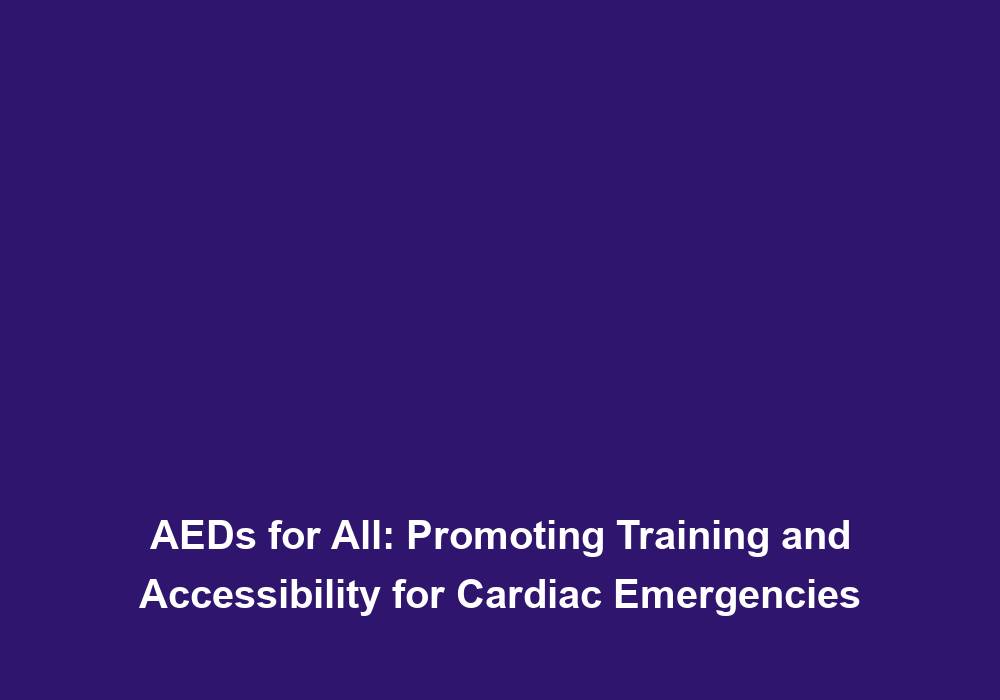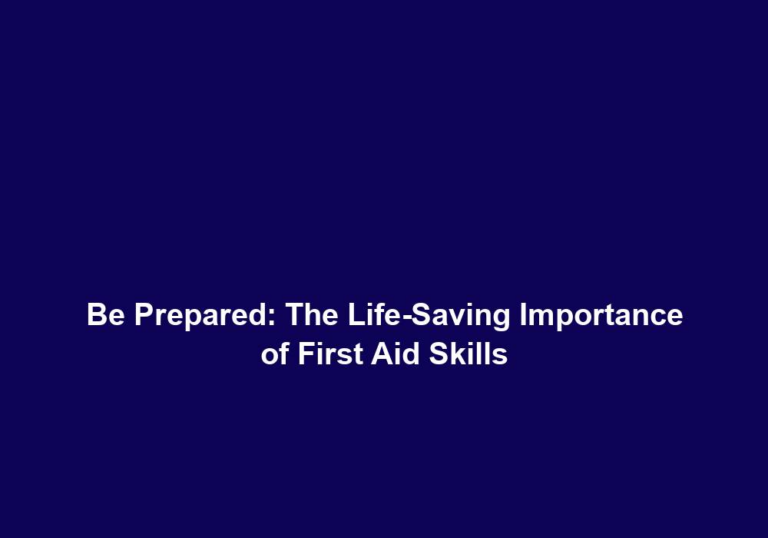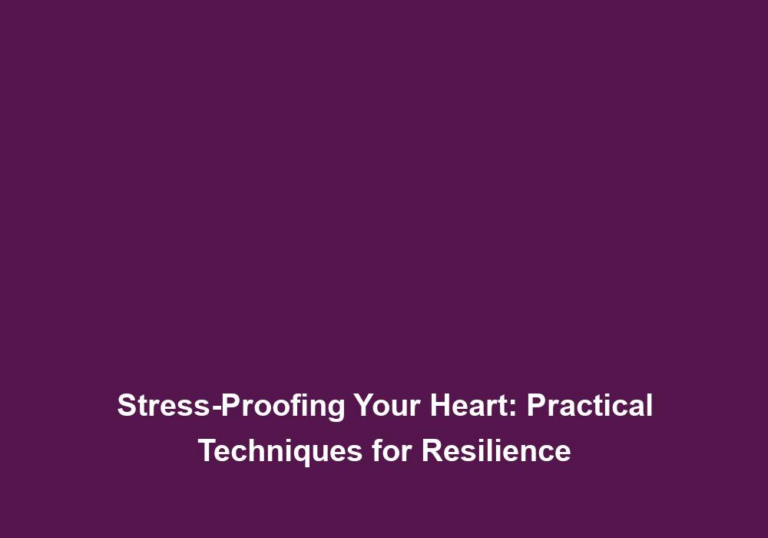AEDs for All: Promoting Training and Accessibility for Cardiac Emergencies
Cardiac emergencies, such as sudden cardiac arrest, can strike anyone at any time. With the potential to be life-threatening, it is crucial to have effective measures in place to ensure prompt response and treatment. One such measure that has proven to be highly effective is the use of Automated External Defibrillators (AEDs). In this article, we will delve into the importance of promoting training and accessibility for AEDs to enhance cardiac emergency response.
Understanding the Significance of AEDs
An AED is a portable device that delivers an electric shock to the heart in cases of cardiac arrest. This shock, known as defibrillation, helps restore the heart’s normal rhythm and can significantly increase the chances of survival. AEDs are designed to be user-friendly, with voice and visual prompts guiding the rescuer through the process. They can be used by anyone, even those without prior medical training, making them an invaluable tool for saving lives.
The Importance of Training
While AEDs can be used by anyone, receiving proper training significantly enhances the effectiveness of their use. Training programs teach individuals how to recognize the signs of cardiac arrest, perform CPR (Cardiopulmonary Resuscitation), and use an AED correctly. These programs also help individuals develop the confidence and skills necessary to respond quickly and effectively during emergencies.
By promoting training in AED usage, we can empower more individuals to take action when a cardiac emergency occurs. This not only increases the likelihood of a positive outcome but also helps create a network of trained individuals ready to respond in their communities.
Benefits of AED Training:
- Recognition of cardiac arrest signs: AED training equips individuals with the knowledge to identify the symptoms and signs of cardiac arrest, such as loss of consciousness, no pulse, and abnormal breathing patterns. This allows for early intervention, improving the chances of survival.
- Proper CPR technique: Alongside AED usage, AED training often includes CPR training. Knowing how to perform CPR correctly can help maintain blood flow and oxygen supply to the vital organs until medical professionals arrive.
- Familiarity with AED operation: Training ensures that individuals are comfortable using an AED and understand its operation. This includes knowing how to attach electrode pads correctly, following voice and visual prompts, and effectively delivering defibrillation shocks.
Building a Network of Trained Individuals:
- Increased community response: By promoting AED training, more individuals within a community will be prepared to respond in case of a cardiac emergency. This increases the likelihood of someone being nearby and able to provide immediate aid.
- Quick and effective response: Trained individuals can confidently and promptly initiate CPR and use an AED, minimizing the time between cardiac arrest and defibrillation. Prompt action is vital for improving survival rates.
Accessibility for All
Another crucial aspect of promoting AED usage is ensuring accessibility. AEDs should be readily available in public spaces, workplaces, schools, and other areas where people gather. By having AEDs strategically placed, we can minimize response time and increase the chances of survival.
To ensure accessibility, organizations and communities can take several steps:
-
AED Placement: Identify high-risk areas within a community, such as sports facilities, shopping centers, and airports, and place AEDs in easily accessible locations. Consider factors like visibility, proximity to potential cardiac emergency locations, and sufficient signage to guide individuals in locating the device.
-
AED Maintenance: Regularly inspect and maintain AEDs to ensure they are in good working condition. This includes checking battery life, electrode pad expiration dates, and conducting routine equipment checks. Proper maintenance ensures that AEDs are always ready for use.
-
Awareness and Education: Conduct public awareness campaigns to educate the community about the importance of AEDs and how to use them effectively. This can be done through workshops, classes, or even online resources. By increasing awareness, more individuals will be inclined to learn about AEDs and act as potential first responders during emergencies.
-
Legal Considerations: Understand and comply with local regulations regarding AED placement and usage. Some jurisdictions may have specific requirements or guidelines that need to be followed to ensure legal compliance.
The Impact of Accessibility:
- Minimizing response time: Having AEDs strategically placed in high-risk areas ensures that they are readily available in case of an emergency. This reduces the time it takes for a rescuer to reach an AED and deliver life-saving defibrillation shocks.
- Increasing chances of survival: Studies have shown that early defibrillation significantly improves survival rates. By ensuring AED accessibility, more individuals have the opportunity to receive prompt defibrillation, increasing their chances of survival.
Collaborating with Medical Professionals
Collaboration with medical professionals is vital for promoting AED usage and ensuring the best possible outcomes. Engaging local healthcare providers, emergency medical services, and medical organizations can help establish training programs, provide guidance on AED placement, and offer ongoing support.
By collaborating with medical professionals, communities can tap into their expertise and leverage their resources to create comprehensive cardiac emergency response plans. These plans can include AED training for individuals, regular AED maintenance, and establishing a network of trained volunteers or community responders who can provide immediate assistance during emergencies.
Benefits of Collaboration:
- Expert guidance: Medical professionals can provide valuable insights into the most effective AED training methods and help tailor programs to specific community needs. Their expertise ensures that training is comprehensive and up-to-date.
- Establishing partnerships: Collaborating with medical professionals fosters strong connections between communities and healthcare providers. This can lead to ongoing support, regular training updates, and the sharing of best practices.
- Resource utilization: Medical professionals can assist in identifying funding opportunities, securing grants, or accessing resources necessary for successful AED implementation and maintenance.
Conclusion
AEDs are essential life-saving devices that can significantly improve the chances of survival during cardiac emergencies. By promoting training and accessibility for AEDs, we empower individuals to respond effectively, potentially saving lives. Training programs, AED placement, regular maintenance, awareness campaigns, and collaboration with medical professionals all play a crucial role in enhancing cardiac emergency response. Let us work together to ensure that AEDs are available and accessible to all, creating safer communities and saving lives.







